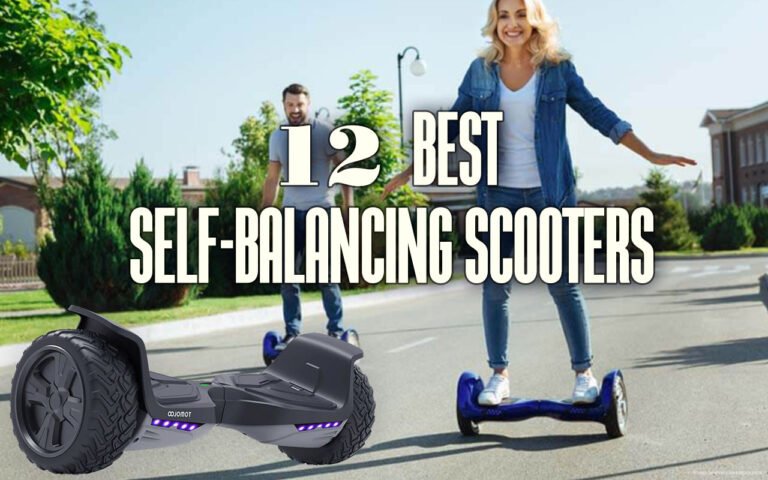
Knee scooters (also called leg scooters or knee walkers) have experienced a significant rise in popularity over the years. Knee scooters are a godsend for individuals who have difficulty walking. If you fit into this category, you undoubtedly want to make your life simpler and acquire a high-quality knee scooter. You may go for a stroll as well. A knee scooter, also known as a knee walker, is medical recovery equipment that helps to alleviate any knee injuries.
Some of the most common injuries that lead to a non-weight bearing recommendation include sprained ankles and foot fractures. However, there are many other lower leg injuries that can cause this same outcome. Furthermore, it has other appealing advantages that make it the top pick on the market today for lower leg injuries.
But you may wonder how to get the most out of your precious knee scooter. Don’t be anxious; we’re here to assist you! Here is a detailed description of how to use your knee scooter so that you can go about your daily routine feeling normal again. Knee scooter require little effort to operate, making them a perfect option for individuals who lack upper body strength. deneme bonusu
Knee scooters, like other medical equipment, need attention and regular maintenance, especially when utilized frequently.
- To prevent rust and dampness, keep the knee scooter indoors.
- Use a mild cleaning solution and damp cloth to clean the knee scooter surfaces and wheels.
- To clean the knee scooter, avoid utilizing a water hose or a power sprayer.
- Check your tires regularly for damage and loss of tread.
- Examine the knee rest pad for wear and tear.
- Make sure all of the nuts and bolts are secure.
Why use a Knee Scooter
The significant advantage of knee scooters over regular mobility scooters is that they don’t require your leg to fold. Instead, place your injured foot on a big, comfortable padded seat. They are a fantastic alternative to traditional canes and traditional crutches. These Knee Scooter provide a more modern-day alternative to crutches, canes, and regular walkers.
They are designed for elderly persons with walking difficulties and find them beneficial for easy mobility. In addition, they are crucial to people who have had disabling their foot injury or ankle injury. superbetin giriş
When using traditional crutches, your arms bear most of your body weight, although this isn’t easy with knee scooters. You can go about your day, such as going to work or shopping, without issue. This knee scooter is packed with features and unique turning capabilities that make it easy to navigate through tight spaces and around obstacles.
How to use a Knee Scooter?
When you use crutches, your arms have to bear most of your weight. With a knee scooter, however, you can move using your leg muscles while keeping the injured leg from having to support any weight.
- Step 1: Check out the angle of your knee pad and the height of your steering column to ensure they’re consistent.
- Step 2: Ensure the hand brakes are engaged to prevent the scooter from rolling.
- Step 3: Begin by putting your hands on the handlebars and resting your wounded leg on the paddle seat while keeping your other leg on the ground.
- Step 4: Use your leg to touch the ground and propel yourself forward as you release the handbrake. In this stage, you should consider balance and stability.
- Step 5: When you want to stop, place your weight on the ground with your unaffected leg. Your scooter will gradually come to a halt rather than suddenly.
- Step 6: It must maintain the hand brakes open to avoid injury or a fall.
Things You need to pay attention to
1. Body position
Begins; make yourself at ease as soon as you sit on the scooter with your knee. Place your injured leg or knee in the middle of the pad at a 90-degree angle and your other leg on the ground.
Ideally, your unaffected limb should be stable and straight while your afflicted leg is parallel to the ground. Keep your balance in the center and the wheels on the floor.
2. Elbow Height
Keep your elbows in a flexed position. Slide the handles up and down by putting your knee on the kneepad and removing the adjustment knob. While holding the handlebar with both hands, stand with your unaffected leg in an upright posture. When your elbows are slightly bent, they should be in a perfect posture.
Don’t your elbows; otherwise, you’ll strain your arms, shoulders, and upper back.
3. Handlebar Height
Ensure the handlebar is set to the proper height in front of you, which should be about your waist height. You should not bend your body over the handlebar because it is possible that you will get injured.
Check the handle lock each time you get on and off the scooter to ensure it doesn’t. To move safely, place both of your hands on the handlebars.
4. Knee Pad Size and Width
For better knee protection, the Knee pad should be broader and deeper but never smaller. The kneepad foam should also be longer and wider to guarantee that your knee does not come off the pad when riding. The item should be able to carry 300 pounds of weight capacity. With a weight capacity of 300 pounds, this product is perfect for people ranging from 5 inches to 6’6″ in height.
Before buying a knee walker, remember that the size and width are adjustable. However, some models are cheaper and do not include this function. This knee walker comes with a free, detachable storage basket and can be set up without any tools. There are several choices to consider when purchasing a knee walker. Now that you’ve learned everything there is to know about knee scooters; it’s time to choose one for yourself.
5. Knee Wheelchair’s Seat
There may be a knob or a lever under the knee pad for height adjustments. You may rotate a knob or turn a control (depending on the model) to your liking by holding the seat sides firmly. The seated mobility scooter is designed for comfort with a large gel padded seat, Ergonomic rubber hand grips, and front leg platform. At only 18 pounds, this product provides a contoured knee platform for cushioning and ergonomic rubber hand grips.
A safety pin may also be included with the lever to ensure that the seat is in its correct position. If you find that the safety pin is in the way, remove it before increasing or lowering the height. After that, make sure the lever is secure and tight.
Important Safety Tips
- Examine the handlebar and length and the knee pad’s pads and width. Make any necessary changes. You should also check the instruction booklet.
- Make careful to tighten the nuts, bolts, and safety pins correctly and that none of the components are missing.
- On uneven surfaces or uneven terrains, such as stairs, escalators, or inclined floors, do not move.
- Slow down if you encounter a turn or various surfaces along your route (for example, from the grass road).
- Check whether the brakes are working correctly and the wheels are moving in tandem with your handlebars.
- When mounting or dismounting from the scooter, check for locked hand brakes. When moving, utilize both of your hands.
- With your hand brake, do not ever brake the vehicle. Instead, keep your unaffected leg active.
- When riding, be careful not to go too fast because you might lose your balance. Keeping a steady walking speed is more beneficial for your safety.
- Don’t take anyone on the scooter with you.
- Don’t jerk behind the wheel and make a nuisance of yourself in public areas.
- Do not use the scooter to assist you when getting out of a seated position. This may result in a fall.
Conclusion
We think you now have a solid understanding of utilizing your knee scooter correctly. Don’t test out a few models before making a selection. If you want to save money, never sacrifice quality since this is closely tied to your health and convenience. Enjoy ride!
FAQ
Q1. Can you sit on a knee scooter?
No. To keep your healthy foot standing upright on the ground, you must rest it on a softer and broader cushion with your injured foot on its own. In an upright posture, you should obtain the maximum level of comfort.
Q2. Is it possible to use a knee scooter with a broken fibula?
Sure you can. The purpose of a compression sock is to support the footstool’s extremity (below the knees). You may rest your knee on the pad because fibulas are positioned below the knee.
Q3. Can I use a knee walker on the stairs?
No, you can’t knee walkers on stairwells or escalators because the wheels don’t need precise tandem with your handlebars. To maintain your balance, you must also be concerned with shifting surfaces, such as floor to carpet or road to sidewalks.
Q4. How soon after ankle surgery can I use a knee scooter?
After your ankle surgery, you should make a follow-up visit after 1-2 weeks. Your doctor will determine whether you require one. It’s not advised to use it without consulting a professional.
Q5. Are knee scooters a good idea?
Using a non-weight-bearing knee scooter/knee walker or another non-weight-bearing mobility device will help your body recover most from an injury or operation. If you have a non-weight bearing condition, consider using a knee scooter, leg scooter, or knee walker.
Q6. What is the distinction between a knee walker and a knee scooter?
The terms knee scooter and knee walker are sometimes used interchangeably to describe the same product. Knee scooters are most often referred to as knee walkers, but the term knee scooter is also used. However, they both refer to the same mobility aid device.








Blog Comments
10 Best Knee Scooters in 2022 - Cheap Pro Scooters
September 2, 2022 at 8:45 am
[…] blisters on your hands or strain muscles in your shoulders when you use crutches. As a result, a knee scooter may be an excellent option for you since you will not be able to damage yourself further when […]